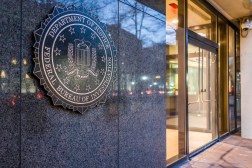Apple and Samsung may be sparring over intellectual property rights to cellphone technology, but according to the Office of Management and Budget, the U.S. has made significant progress in intellectual property right protection in recent years.
OMB today released the administration’s 2013 Joint Strategic Plan for Intellectual Property Enforcement, which provides an outline for the next three years of work in the area, and develops the work already being done by the administration.
In the past three years since the last joint strategic plan was released, the administration has improved drastically upon law enforcement of intellectual property rights, and legislation protecting them.
Since fiscal year 2009, Department of Homeland Security arrests in intellectual property cases have increased by 159 percent, and convictions are up by 109 percent. FBI health and safety-focused investigations have spiked 308 percent, while FBI health and safety arrests are up 286 percent. New trade secret cases also grew by 39 percent.
Congress also enacted seven of the administration’s legislative recommendations, many of which increase penalties for offenders and require stricter standards for reporting counterfeited items.
“We will focus on infringement that has a significant impact on the economy, the global economic competitiveness of the United States, the security of our nation, and the health and safety of the American public,” Victoria Espinel, U.S. intellectual property enforcement coordinator, said in a June 20 statement.
In fact, intellectual property-intensive industries accounted for 34.8 percent of U.S. GDP, and 60 percent of exports in 2010, according to a study by the Commerce Department.
The 2013 joint strategic plan acknowledges the challenges evolving technology poses in protecting intellectual property rights, but also discusses how technology can be used to the administration’s advantage.
“We envision new technologies able to screen trucks and shipping containers at our borders faster, more efficiently and more comprehensively than is possible at present,” the framework states. “We hope to see increased engagement between technology experts and the U.S. government.”
The 2013 plan will build on the existing foundation laid out in the 2010 plan, but also includes new ideas focused on energizing the international community in this effort, and conducting a series reviews and evaluations of existing measures.






